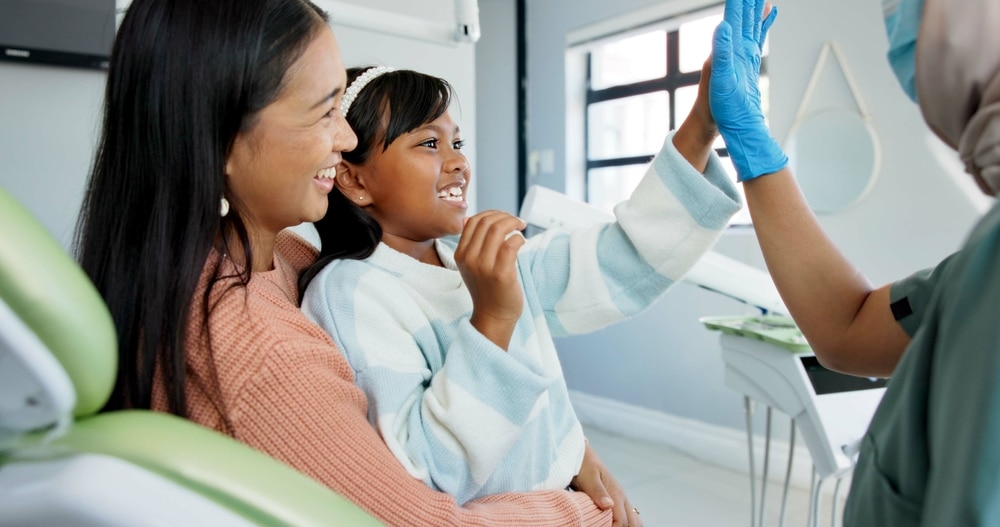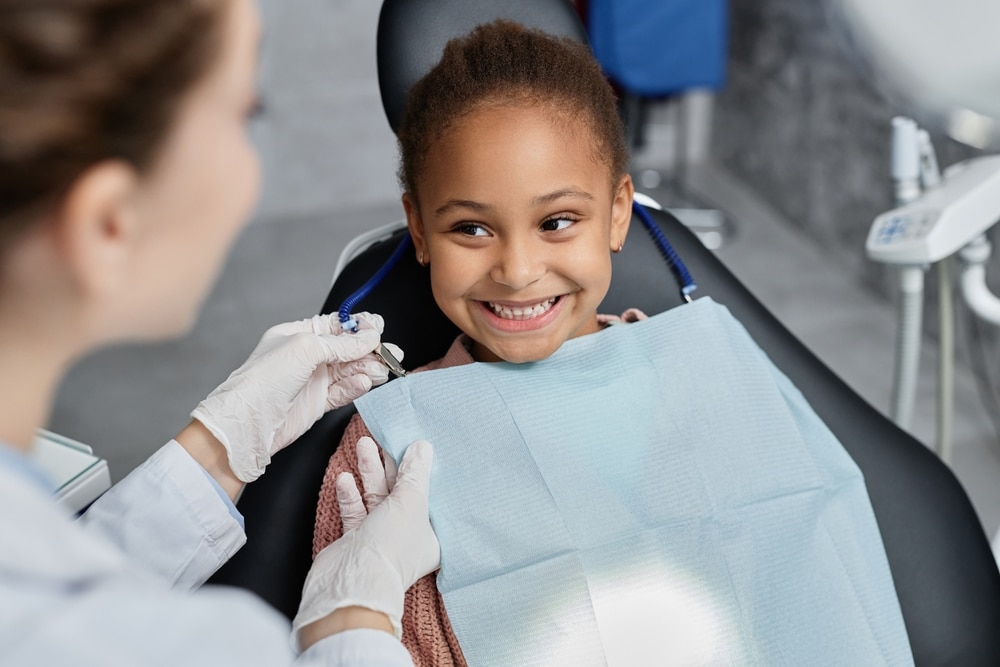Primary teeth sometimes need removal to protect oral health and guide proper growth. Extractions and space maintainers help children maintain comfort and normal development while protecting the path for permanent teeth. At Pediatric Dentistry of Burke, we provide families in Burke with expert guidance, compassionate treatment, and proven techniques to make each step safe and reassuring.

Our team provides advanced pediatric dental care with a friendly touch and strong credentials. Dr. David Treff is a Diplomate of the American Board of Pediatric Dentistry. He has been recognized for his commitment to children’s oral health with multiple Top Dentist honors in Virginia and Washington, DC. With extensive training from NYU College of Dentistry and Louisiana State University Health Sciences Center, Dr. Treff combines advanced pediatric expertise with a compassionate approach.
Benefits of Extractions and Space Maintainers
Extractions and space maintainers are designed to support normal development, prevent future problems, and promote lasting oral wellness. The main benefits include:
- Relief from pain and infection that affects eating and sleep.
- Protection of developing permanent teeth and eruption paths.
- Lower risk of crowding and bite issues in later years.
- Support for speech and chewing during growth.
- Guidance that helps you plan orthodontic timing.
These benefits help your child feel better now and thrive later.
How Pediatric Extractions Work
Each extraction begins with a gentle exam and diagnostic X-rays to understand the full picture. If a tooth cannot be restored, Dr. Treff explains the findings and treatment plan. Local anesthesia is carefully administered to keep your child comfortable throughout the visit.
Using specialized pediatric instruments, the tooth is removed with precise and safe techniques. After removal, we manage bleeding, monitor your child’s comfort, and provide detailed instructions for diet, oral hygiene, and follow-up care.
Understanding Space Maintainers
When a child loses a tooth too early, the surrounding teeth can shift and create crowding problems. A space maintainer is a small appliance that preserves the gap for the permanent tooth to grow in correctly. Common options include band and loop or bilateral devices, which we recommend based on your child’s age, dental development, and eruption schedule.
Dr. David Treff and our team will show you how to keep the device clean and comfortable for your child. Regular follow-up visits allow us to monitor progress and make adjustments so the space maintainer continues to fit properly.
Recovery and Aftercare
Proper aftercare is essential for your child’s comfort and healing. To support recovery, we recommend the following steps:
- Keep the gauze pad in place as directed to help control bleeding
- Provide soft foods and cool drinks for the first day to avoid irritation
- Do not allow the use of straws or offer hard, crunchy, or sticky foods during the healing period
- Follow our team’s directions for safe and effective pain management
- Help your child brush gently around the area while avoiding direct contact with the socket
By following these steps, you can promote smooth healing, reduce discomfort, and lower the risk of complications.
Who Is a Good Candidate?

Your child may need an extraction if deep decay destroys a tooth beyond repair. Trauma from a fall or accident, or orthodontic concerns like crowding, can also make removal necessary. When a baby molar is lost too early, space maintainers keep the space open for permanent teeth to erupt in proper alignment.
During your visit, Dr. David Treff will complete a thorough exam, review X-rays, and explain the best treatment options. Our team also discusses behavior support strategies and safe sedation choices so that every child receives care in a calm and reassuring environment.
Why Choose Pediatric Dentistry of Burke for Extractions and Space Maintainers in Burke, VA
Key advantages of choosing our practice include:
- Board-certified pediatric dentist with recognition as a Top Dentist across multiple years.
- Digital X-rays that reduce radiation exposure while improving diagnostic accuracy.
- Child-sized instruments and equipment that make treatment less intimidating.
- Options for behavior guidance and safe sedation to ensure comfort.
- A team that clearly explains every step, ensuring parents feel informed and children feel supported.
This combination of credentials, technology, and a family-focused approach helps children feel safe while receiving the highest standard of dental care.
Frequently Asked Questions
How do I prepare my child for an extraction appointment?
You can help by explaining the visit in simple, positive terms. Bring a comfort item like a toy or blanket. Arrive a little early to give your child time to settle in. Our team will walk you through the steps so you feel at ease.
What foods are best after an extraction?
Soft foods such as yogurt, applesauce, mashed potatoes, and scrambled eggs are gentle on healing areas. Avoid hard, crunchy, or sticky items until the site has healed.
When should my child return for a follow-up?
Most children return within one to two weeks to make sure healing is on track.
Can space maintainers cause discomfort?
Space maintainers may feel unusual at first, but children adapt quickly. If irritation occurs, contact our office so adjustments can be made.
How long does healing take after an extraction?
Most children heal within one to two weeks. Following home care instructions helps reduce swelling and ensures steady recovery.
What happens if my child does not get a space maintainer?
Without a space maintainer, nearby teeth can drift into the gap. This often leads to crowding and future orthodontic treatment.
Are there alternatives to traditional space maintainers?
In some cases, removable appliances can be used. Dr. Treff will explain which option is best based on your child’s age and dental needs.
Schedule a Consultation for Extractions and Space Maintainers in Burke
If your child needs gentle extractions or a space maintainer, our team is here to help. Call our Burke office at 703-712-8077 and give your child the comfort and expert care they deserve.







